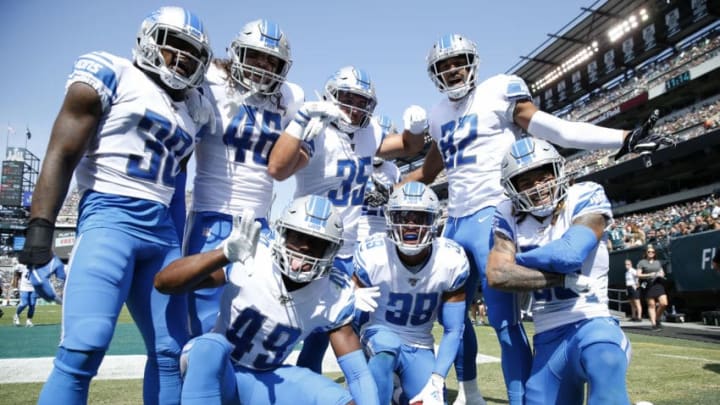
Running Backs
A collective deep sigh of relief was probably breathed by Lions fans following Detroit’s rushing performance last Sunday. What was expected to be a run-dominant approach by new offensive coordinator Darrell Bevell got off to a slow start, averaging just 98.7 yards per game over their first three contests before exploding for 186 against the Chiefs, with a healthy 5.3 yards per tote average.
His bizarre goal-line fumble aside, Kerryon Johnson had an outstanding breakout game last Sunday, showing why he is likely the Lions’ most talented running back since some guy named Sanders. It’s also why his first three below-average rushing performances of the season will likely be outliers by the end of the year.
Johnson’s usage will be an important development to track as the season progresses; the Lions certainly want to avoid a repeat of last season’s finish, when Johnson was forced to sit out the final six contests with a knee injury.
However, if Sunday is any indication, the Lions may be hesitant to reduce his workload. He carried the ball 26 times against the Chiefs and was also targeted three times on passes. He is an every-down back, and a good one.
The Lions seemed completely unwilling to endure a similar experience to last year when jumbo-sized LeGarrette Blount failed to produce consistently despite being heralded as a reliable short-yardage option. As such, they cut offseason acquisition C.J. Anderson after just two games and a 2.7 yards per carry average, furthering the assumption that Johnson will be the primary third-down option moving forward.
Replacing Anderson was not a player with a similarly stout frame or comparable running style, but a smaller, jump-cutting back in Paul Perkins. Eschewing the bruising class of a tailback, the Lions clearly have a type at the position; all three of their backs are under six feet and 215 pounds.
Waiver-wire pickup J.D. Mckissic can fly, as can Rookie Ty Johnson. McKissic has been particularly impressive, breaking off runs of 44 and 26 yards over the last two weeks. He’s also a capable slot receiver in a pinch and has laid some furious blocks on special teams. Versatility, speed, and elusiveness seem to be the desired traits for the reserve backs.
The Lions currently rank tenth in the NFL in rushing yardage at 120.5 per game, a mark they would love to maintain throughout the year. If they’re able to improve on their 3.9 yards per carry average, it would benefit their offense immeasurably.
Grade: B
